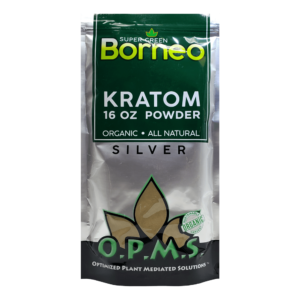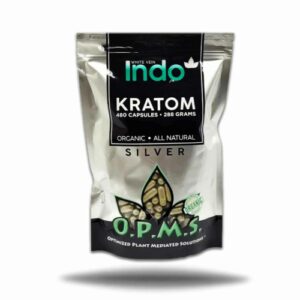blog
Kratom | Bali | Borneo | Dosage | Guidelines | Withdrawal | Depression | Pain Relief | Energy
Kratom is a naturally occurring substance that has been gaining popularity in recent years as an alternative to traditional medicine for pain relief and opioid withdrawal symptoms. However, as with any substance, it’s essential to know the proper dosage and potential side effects to avoid negative outcomes. In this article, we’ll explore the different factors that affect how much kratom you should take and how to ensure your safety when using it.
Kratom (Mitragyna speciosa) is a tree in the coffee family native to Malaysia, Myanmar, Thailand, and other South Asian countries. Its leaves or extracts are used for their stimulating and sedating properties. Kratom is also known for its pain relief and digestive ailment relief capabilities, and some users swear by its ability to aid with opiate withdrawal. However, clinical trials for kratom are limited, and more research is needed to understand its effects fully.
Kratom has two primary active alkaloids, mitragynine and 7-hydroxymitragynine, which have analgesic properties that make them effective pain relievers. It also has anti-inflammatory and muscle relaxant effects, making it useful for easing fibromyalgia symptoms. Kratom users report feeling more energetic, alert, and sociable when taking low doses, while higher doses act as a sedative, producing euphoric effects and dulling sensations and emotions.
The FDA has not yet regulated the production or sale of kratom, so there are no set standards for safely producing kratom. The limited studies on kratom use and effects mean it hasn’t been officially recommended for medical use, making it potentially risky to take anything not recommended for safe medical use. Kratom contains almost as many alkaloids as hallucinogenic mushrooms and opium, which likely has a strong effect on the body, some of which can be positive, while others can be concerning. Studies are needed to identify the harmful effects of kratom drug interactions and to determine safe dosages for use.
The ideal kratom dosage varies from person to person and depends on several factors, such as metabolism rate and tolerance levels. The best advice for kratom dosing is to take things slowly, especially if it’s your first time. Start with a small dosage, and wait for around 15 to 45 minutes before consuming more.
If you’re a new user, you can safely start with two to four grams for your first dose. After waiting for 20 to 30 minutes, if you can’t feel the effects, you can consume an additional gram or two. This method is way safer than taking too much kratom at once since starting with a high dose right away may lead to unpleasant side effects, such as nausea and stomach discomfort.
A general rule of thumb is to start small and increase from there. Also before starting Kratom or any other supplement please consult your health care provider.
While kratom has been traditionally used as a natural remedy for various health conditions, it is not suitable for everyone. Here are some groups of people who should avoid using kratom:
It is important to consult a healthcare provider before using kratom if you have any underlying health conditions or are taking other medications to ensure safe use.
A low dose of kratom is anything between 2 and 6 grams (Kratom leaf powder), while a high dose is when you consume more than 6 grams, with 8 grams considered a heavy dose. Users who are more sensitive or want the energizing benefits of kratom generally take low doses, while high doses are for those seeking a sedative effect. User have also reported that a low dose of kratom works well in treating anxiety.
Kratom is a natural pain reliever that can be effective at any dosage. However, for optimal pain relief, higher doses are recommended, particularly those containing high levels of mitragynine and 7-Hydroxymitragynine alkaloids. These compounds bind to the body’s opioid receptors, including kappa, delta, and mu, to reduce pain sensitivity.
Here is a kratom dosage chart for different levels of pain:
It’s important to start with a lower dose and gradually increase it until you achieve the desired pain relief. Avoid taking more than necessary as higher doses increase the risk of side effects. Look for a potent kratom strain with a high content of 7-hydroxymitragynine alkaloid, which provides potent pain-relieving, anti-inflammatory, and muscle-relaxing effects. This is particularly beneficial for people experiencing chronic pain due to conditions such as fibromyalgia, arthritis, rheumatism, headaches, stomach aches, muscle strain, burns, cuts, and bone fractures.
Kratom helps people break their addiction to opioids by pairing with opioid receptors to help manage withdrawal symptoms. Dosage varies depending on the person’s needs, and high doses of kratom powder or other products are necessary. The process of using kratom to overcome opioid addiction should be done under medical supervision. A normal dose of two grams of kratom powder can be taken, with a forty-five-minute gap between each two-gram addition, up to eight grams. This method helps alleviate withdrawal symptoms, making the patient feel better, reducing craving, increasing productivity, and improving mood.
Kratom alkaloids can increase energy and focus by affecting the body’s noradrenaline system. Kratom works to stimulate the system, increasing energy levels, affecting dopamine levels, and inducing euphoria. Microdosing with two to four grams of kratom powder is effective in improving energy levels. However, too much kratom can cause the opposite effect, leading to fatigue, difficulty in focusing, and reducing libido. White-veined kratom is ideal for stimulation.
Kratom use induces euphoria and anxiety, increasing dopamine levels in the brain. Dopamine causes bursts of happiness, increased sociability, sex drive, and a better mood, making it ideal for a person suffering from depression. Microdosing one to two grams of kratom powder is sufficient for mild depression, while moderate depression requires two to four grams. For chronic or severe depression, consult a doctor. Bali kratom and Borneo kratom work best for managing depression. Remember that kratom products are just there to help and should not be used in place of medical treatment.
If you’re interested in taking liquid kratom, it’s important to know how much to take. Here’s a guide to help you understand how to measure your dosage properly:
Remember, the dosage of liquid kratom may vary depending on the strength and potency of the product you’re using. If kratom is new to you, we suggest turning to dependable suppliers like Kures.co to buy Kratom with confidence.
U.S. Food and Drug Administration. (n.d.). FDA and Kratom. https://www.fda.gov/news-events/public-health-focus/fda-and-kratom



Kratom by Type
Kratom by brand